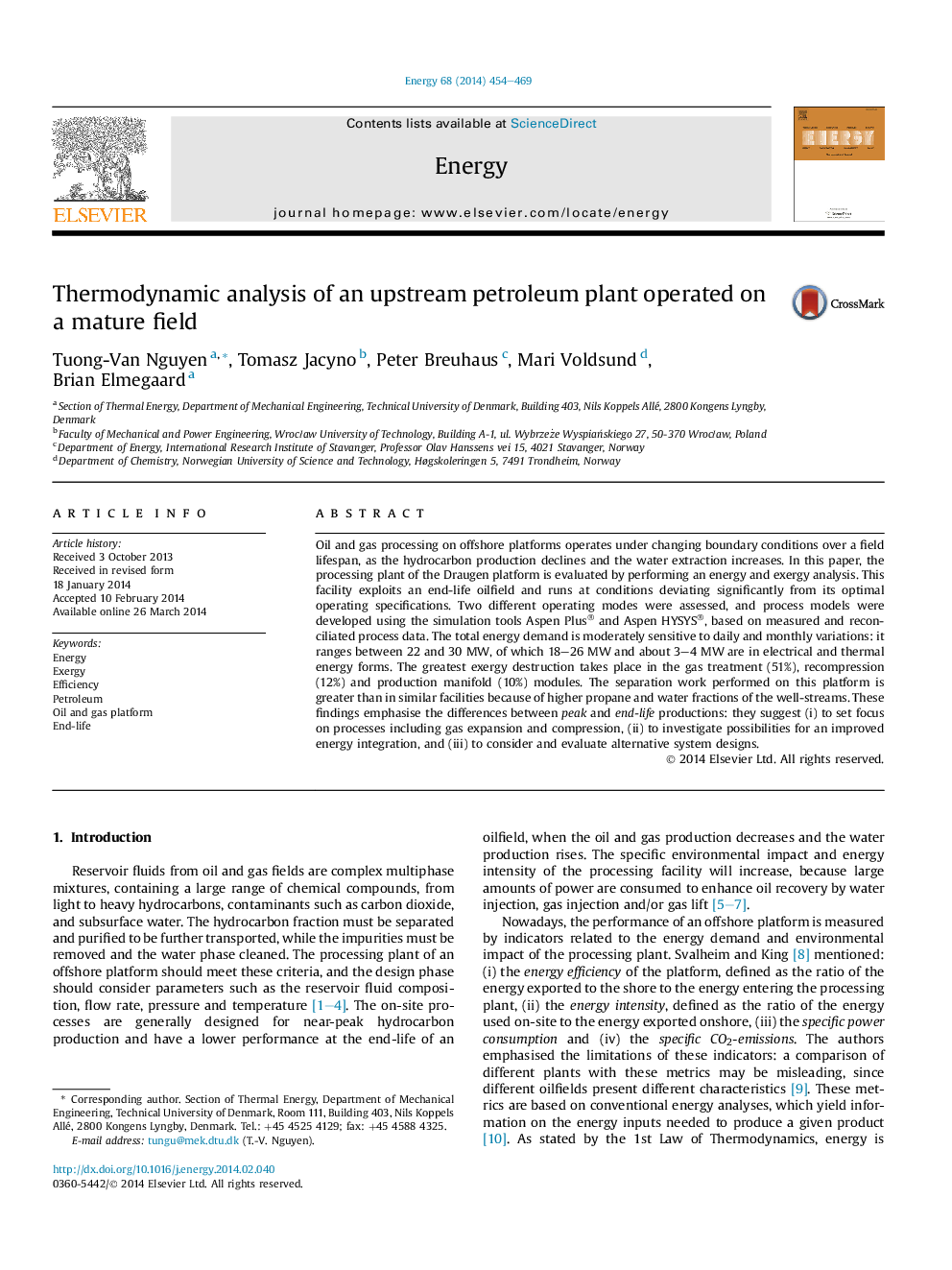| Article ID | Journal | Published Year | Pages | File Type |
|---|---|---|---|---|
| 8078112 | Energy | 2014 | 16 Pages |
Abstract
Oil and gas processing on offshore platforms operates under changing boundary conditions over a field lifespan, as the hydrocarbon production declines and the water extraction increases. In this paper, the processing plant of the Draugen platform is evaluated by performing an energy and exergy analysis. This facility exploits an end-life oilfield and runs at conditions deviating significantly from its optimal operating specifications. Two different operating modes were assessed, and process models were developed using the simulation tools Aspen Plus® and Aspen HYSYS®, based on measured and reconciliated process data. The total energy demand is moderately sensitive to daily and monthly variations: it ranges between 22 and 30Â MW, of which 18-26Â MW and about 3-4Â MW are in electrical and thermal energy forms. The greatest exergy destruction takes place in the gas treatment (51%), recompression (12%) and production manifold (10%) modules. The separation work performed on this platform is greater than in similar facilities because of higher propane and water fractions of the well-streams. These findings emphasise the differences between peak and end-life productions: they suggest (i) to set focus on processes including gas expansion and compression, (ii) to investigate possibilities for an improved energy integration, and (iii) to consider and evaluate alternative system designs.
Related Topics
Physical Sciences and Engineering
Energy
Energy (General)
Authors
Tuong-Van Nguyen, Tomasz Jacyno, Peter Breuhaus, Mari Voldsund, Brian Elmegaard,
